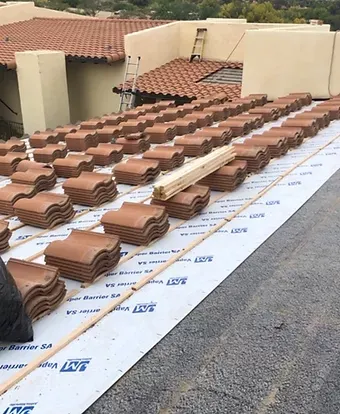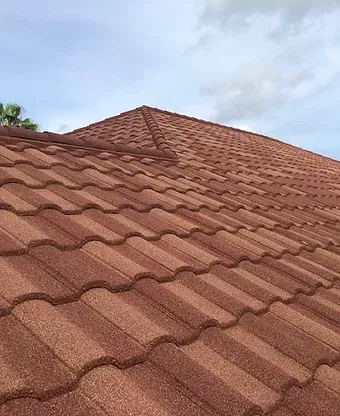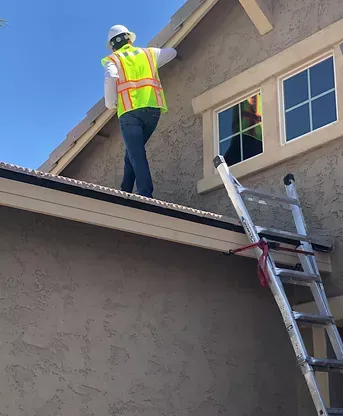How a New Roof Can Lower Your Homeowners Insurance in Southwest Florida
How a New Roof Can Lower Your Homeowners Insurance in Southwest Florida
Why a New Roof Can Lead to Lower Homeowners Insurance Premiums
Insurance companies assess risk by evaluating the condition of your home, and one of the biggest factors is your roof. A new roof significantly reduces the likelihood of costly claims due to leaks, structural damage, or storm-related incidents. In hurricane-prone areas like Southwest Florida , where severe weather can wreak havoc on older roofs, insurers view newer roofs as a way to minimize their financial exposure. This reduced risk often translates into lower premiums for homeowners who invest in this critical upgrade.
Additionally, many insurers offer specific discounts for homes with new or upgraded roofs because they are less likely to sustain damage during storms. By installing a durable, modern roof, you not only protect your home but also demonstrate to your insurer that you're taking proactive steps to mitigate risks. As we explore further, you'll see how different materials and building codes play a role in maximizing these savings.
How Insurers Evaluate Roof Condition and Age
In Southwest Florida, insurers place significant emphasis on the age and condition of your roof when determining premiums. Many policies require annual inspections to ensure compliance with safety standards, especially in coastal areas prone to hurricanes. If your roof is older than 15-20 years, insurers may increase your rates or even deny coverage altogether unless you replace it. This strict approach helps them manage the high risks associated with aging roofs in extreme weather conditions.
Beyond age, insurers look for documentation proving your roof meets current building codes and has been properly maintained. Missing or incomplete records can lead to higher premiums or complications during the claims process. For homeowners, staying ahead of these requirements by proactively replacing an old roof can prevent unexpected costs and ensure uninterrupted coverage. Now let’s dive deeper into how roofing materials impact insurance rates.
Types of Roofing Materials and Their Impact on Insurance Rates
The type of material used for your roof plays a major role in determining your insurance premiums. Traditional asphalt shingles are common but don't always provide the best protection against storms. On the other hand, materials like metal, clay tiles, and concrete offer superior durability and resistance to wind and hail, which insurers reward with lower rates. In particular, impact-resistant materials approved by Miami-Dade County standards are highly valued in Southwest Florida due to their proven ability to withstand severe weather events.
Upgrading to these advanced materials not only strengthens your home's defenses but also qualifies you for substantial discounts. Some insurers offer credits specifically for roofs rated Class 4 or higher for impact resistance. While these options may have a higher upfront cost, the long-term savings on insurance and increased property value make them a smart investment. Let’s now examine recent changes in Florida laws that affect roofing and insurance eligibility.
Recent Florida Roofing Laws and Code Changes Affecting Insurance
Florida has implemented several updates to its building codes and insurance laws that directly influence roof replacements. One notable change is the elimination of the "25% replacement rule," which previously allowed partial roof repairs without requiring full code compliance. Now, any significant repair or replacement must adhere to the latest standards, including updated underlayment requirements designed to enhance storm resilience. These changes aim to improve overall housing safety while giving insurers more confidence in covering properties.
For homeowners, understanding these regulations is crucial before starting a roof project. Compliance ensures you qualify for available insurance discounts and avoids potential issues during inspections. It’s also worth noting that failure to meet these updated codes could result in denied claims or non-renewal of policies. With this context in mind, let’s discuss the specific discounts and credits available for new roofs.
Common Discounts and Credits for New Roofs
Many insurers in Southwest Florida offer attractive incentives for homeowners who install new or upgraded roofs. Wind mitigation credits are among the most popular, rewarding features like secondary water barriers and reinforced connections that reduce storm damage. Additionally, roofs made from impact-resistant materials often qualify for special discounts, reflecting their ability to withstand debris and high winds during hurricanes.
Some companies also provide voluntary upgrade incentives for homeowners who go above and beyond basic requirements. For example, adding extra reinforcements or choosing premium materials might unlock additional savings. To take full advantage of these opportunities, it’s essential to work closely with your contractor and insurer to ensure all eligible upgrades are documented. Speaking of documentation, let’s explore what’s required after a roof replacement.
Insurance Inspections and Documentation Required After a Roof Replacement
After completing a roof replacement, thorough documentation is key to securing insurance discounts. Insurers typically require proof of installation, material specifications, and certifications confirming compliance with local building codes. They may also request photos or inspection reports verifying the quality and workmanship of the new roof. Without proper paperwork, you risk missing out on potential savings or facing delays in adjusting your policy.
Once submitted, your insurer will review the documents and may schedule an inspection to validate the upgrades. This process ensures accuracy and fairness in applying discounts. While it may seem tedious, providing comprehensive records expedites the approval process and guarantees you receive the full benefit of your investment. Next, let’s focus on the advantages of metal roofs and high-impact ratings.
Metal Roofs, Impact Ratings, and Special Considerations
Metal roofs have gained popularity in Southwest Florida due to their exceptional durability and energy efficiency. Beyond aesthetics, they boast high impact ratings, making them ideal for withstanding severe storms and flying debris. Many insurers recognize these benefits by offering significant discounts for homes equipped with metal roofs, particularly those meeting Miami-Dade County standards. However, it’s important to note that simply choosing metal isn’t enough—insurers evaluate factors like installation quality and fastening systems to determine eligibility.
A common misconception is that all metal roofs automatically qualify for discounts. In reality, only those with Class 4 impact ratings or equivalent certifications earn premium reductions. Working with a qualified contractor ensures your roof meets these rigorous standards, unlocking maximum savings. Now, let’s address how quickly you can expect to see these savings reflected in your policy.
How Quickly Can You Expect Insurance Savings After a Roof Replacement?
Savings from a new roof typically appear within one to two billing cycles after submitting the necessary documentation. The timing depends on how quickly your insurer processes the paperwork and conducts any required inspections. Being proactive about notifying your insurer and providing complete records helps expedite this timeline, ensuring you benefit sooner rather than later.
Potential Limitations: When a New Roof Might Not Lower Your Insurance
While a new roof generally leads to lower premiums, there are exceptions. For instance, if you choose low-quality materials or fail to meet updated building codes, your insurer may not offer significant discounts. Similarly, homeowners with a history of frequent claims might find it harder to secure reduced rates despite investing in a new roof. Each insurer evaluates risk differently, so results can vary based on individual circumstances.
Another factor to consider is whether the roof replacement was mandatory or voluntary. Insurers sometimes impose replacements as a condition of continued coverage, which doesn’t always come with the same financial incentives as proactive upgrades. Understanding these nuances helps set realistic expectations. Now, let’s compare voluntary versus required roof replacements in more detail.
Voluntary vs. Required Roof Replacement: Insurance Implications
Choosing to replace your roof voluntarily often yields greater rewards compared to doing so because your insurer mandates it. Voluntary upgrades signal to your insurer that you’re taking initiative to reduce risks, potentially qualifying you for additional discounts. Conversely, mandatory replacements usually fulfill minimum requirements without unlocking extra savings. Planning ahead and acting before your roof becomes a liability can maximize both protection and cost benefits.
Roof Upgrades for Maximum Insurance Savings
To maximize insurance savings, consider upgrading components like underlayment, flashing, and fasteners alongside your new roof. Reinforcing these elements enhances wind resistance and prevents water intrusion, addressing two major concerns for insurers. Consulting with a knowledgeable contractor ensures your upgrades align with industry best practices and insurer expectations.
Comparing Insurance Quotes: Steps After Replacing Your Roof
After replacing your roof, it’s wise to shop around for new insurance quotes. Provide prospective insurers with detailed information about your roof’s materials, age, and certifications to highlight its storm-resistant features. Comparing multiple offers allows you to find the best rate that reflects your home’s improved risk profile.
Frequently Asked Questions
How much can I typically save on insurance with a new roof in Southwest Florida?
Homeowners in Southwest Florida can typically save between 10% and 30% on their insurance premiums with a new roof, depending on factors like material choice, impact rating, and insurer policies. High-quality, impact-resistant roofs tend to yield the highest savings, making them a worthwhile investment over time.
Do I need to hire a specific type of contractor for my roof to qualify for insurance discounts?
Yes, hiring a licensed and insured contractor is essential to qualify for insurance discounts. Additionally, some insurers require contractors to hold specific certifications or use approved materials. Always verify credentials and obtain documentation proving compliance with local codes and insurer requirements.
Are all new roofs eligible for wind mitigation discounts?
No, not all new roofs qualify for wind mitigation discounts. Eligibility depends on meeting minimum standards for wind resistance and impact ratings, such as having a Class 4 certification or Miami-Dade approval. Verifying these qualifications with your contractor and insurer ensures you receive applicable credits.
Will my insurance automatically adjust my rate after a roof replacement?
No, your insurance won’t automatically adjust your rate after a roof replacement. You must notify your insurer, submit documentation, and possibly request a new inspection to verify the upgrade. Once processed, your premium should reflect the reduced risk associated with your new roof.
What happens if I delay roof replacement on an older home?
Delaying roof replacement on an older home can lead to higher insurance premiums, increased risk of claims, or even policy cancellation. Insurers in high-risk areas like Southwest Florida prioritize protecting their investments, so maintaining an up-to-date roof is critical for affordable coverage.
Conclusion
Investing in a new roof in Southwest Florida offers dual benefits: enhanced protection against severe weather and meaningful savings on homeowners insurance. Modern materials and construction techniques not only strengthen your home but also align with insurer preferences for risk reduction. By selecting impact-resistant materials and adhering to updated building codes, you position yourself for maximum financial and safety advantages.
Take action today by assessing the condition of your roof and exploring qualified upgrades that meet insurer standards. Consult with trusted roofing professionals and your insurance agent to unlock potential savings and fortify your home against storms. Remember, a proactive approach ensures peace of mind and long-term value for Southwest Florida homeowners.




